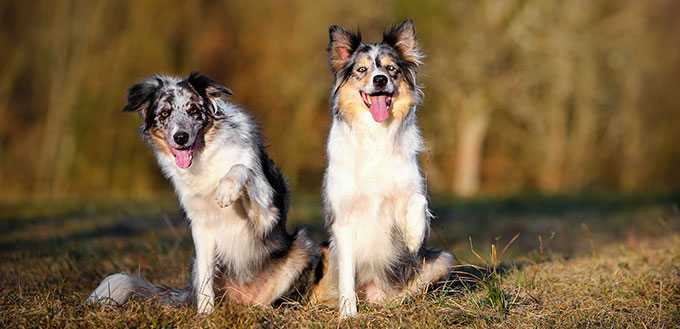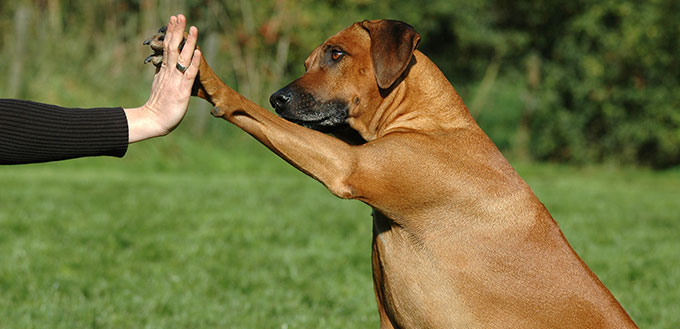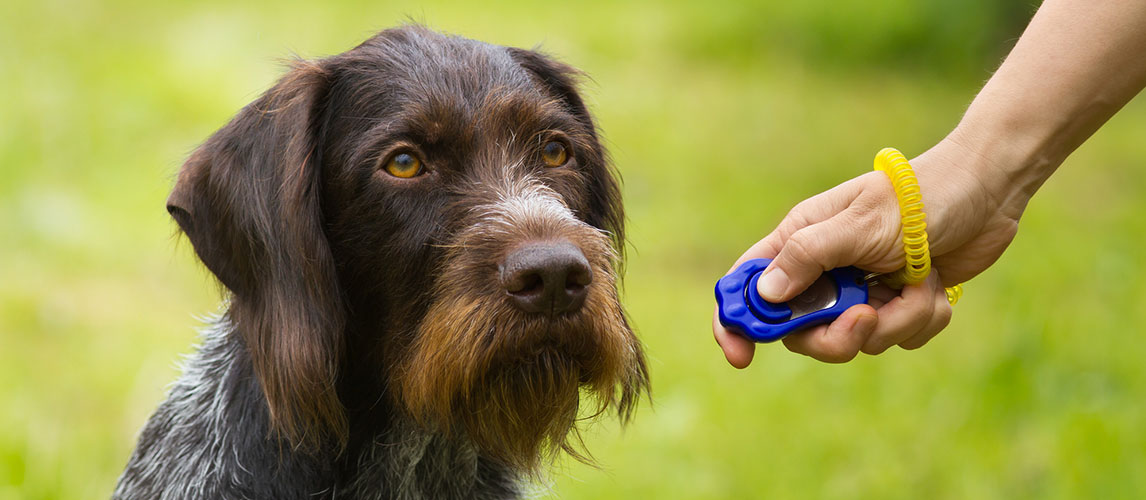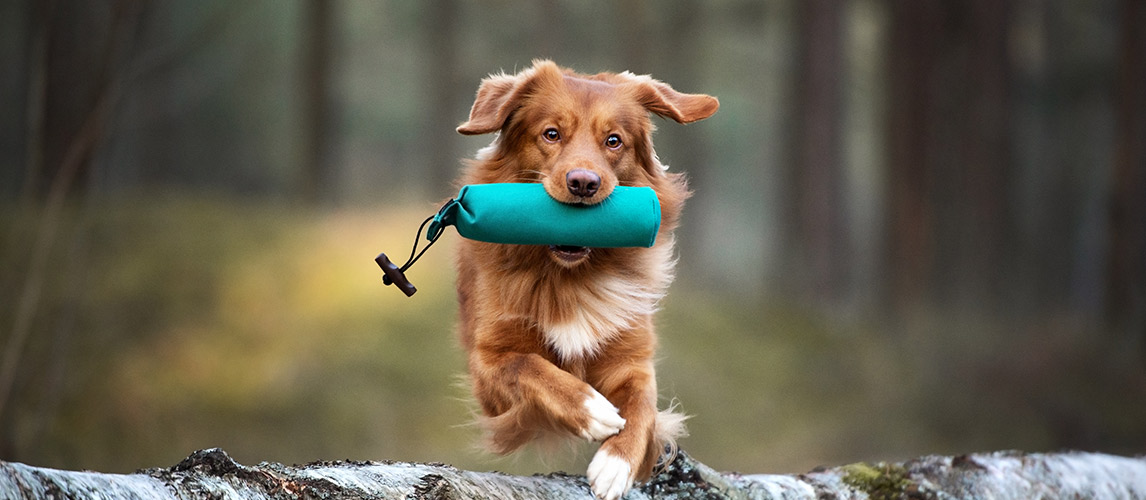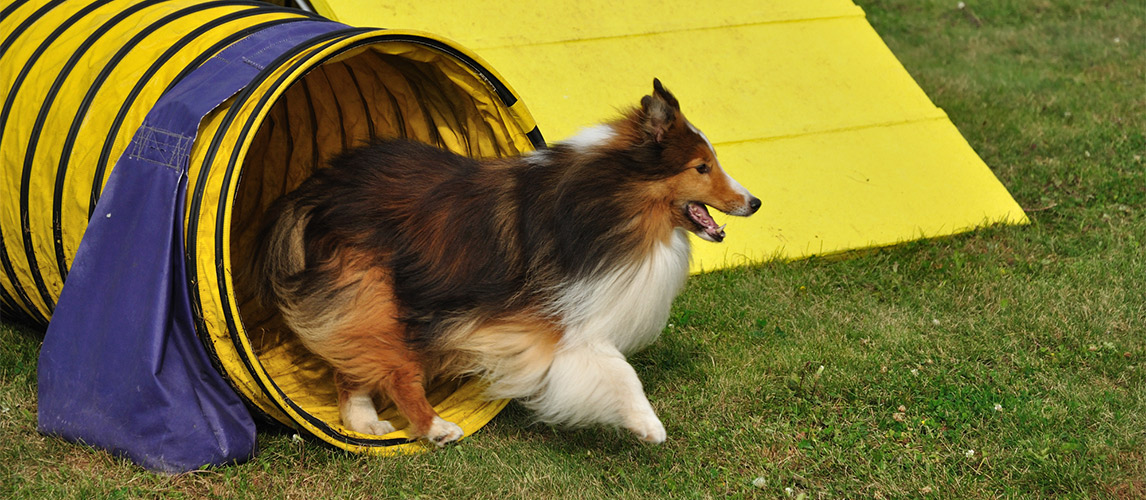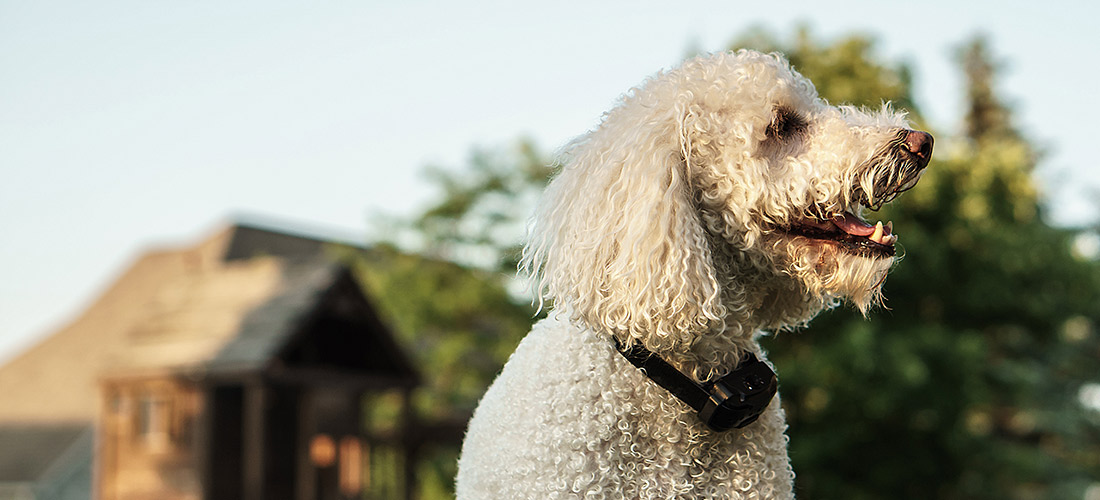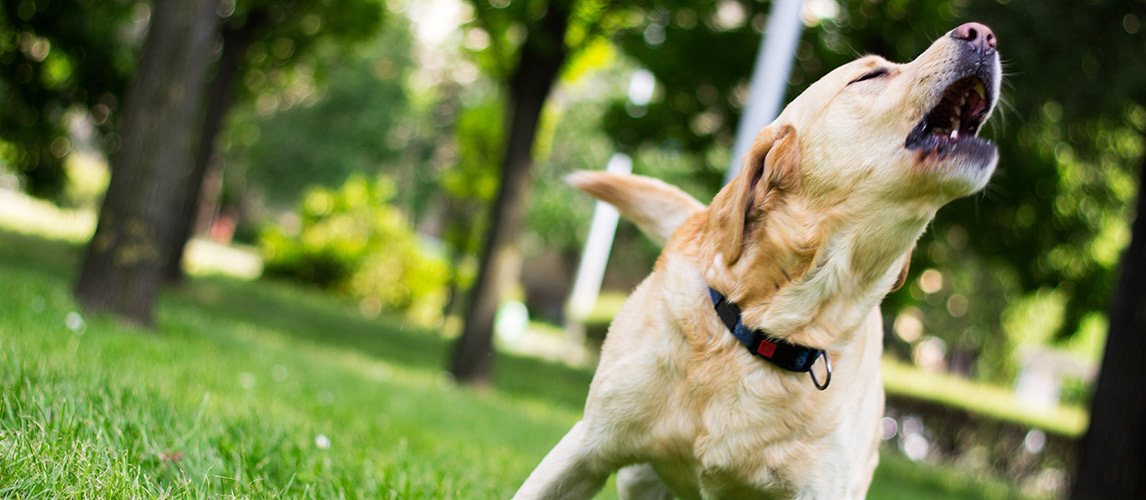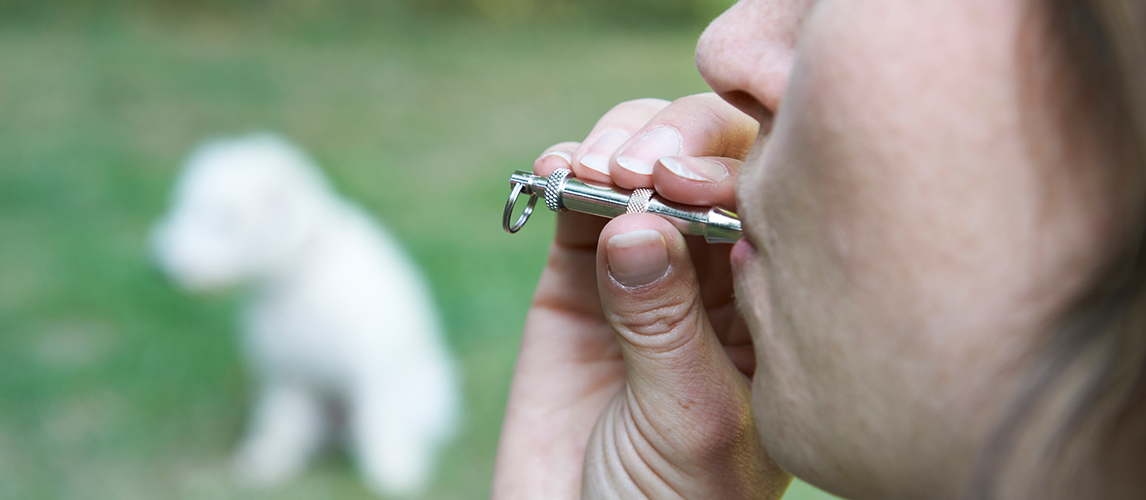Training your dog from an early age is essential not only to ensure good behavior but also to keep him safe and under control. And for all canine training, positive reinforcement is the only way to go. Dogs are smart animals and through consistent commands as well as rewarding good behavior, they soon pick up what they need to do. Which is where clicker training comes in.
As dogs will repeat behavior that gets them a positive response, clicker training will give your pet an instant audible clue that he’s on the right track. And as a pet parent, using a clicker is also quick and easy to learn. So, if you’re looking for a way to positively train your pooch, then clicker training could well be for you. We take a look at the benefits of the system in our guide to how to get started with clicker training with your dog.
What is Dog Clicker Training?
Using a dog training clicker to acknowledge and reward good behavior is an excellent tool to positively train your pet. Originally developed by animal behaviorists back in the 1950s based on a theory called ‘operant conditioning’, clicker training had been successfully used with marine mammals. However, it didn’t become popular with dog trainers until the 1990s and is now one of the most widespread training methods for dogs.
The clicker concept is simple to teach your dog, and that’s the secret of its success – you reward your dog for the desired behavior you want them to do, rather than drawing negative attention to any wrong or ‘bad’ behaviors. And for your young puppy or even older dog, they quickly learn which behavior is going to get your attention/reward…and which ‘wrong’ behaviors will draw a total blank.
To do this, you need a clicker. These handy and affordable dog training devices are easy to use and give your dog an audible ‘click’ that he will quickly come to associate with positive behavior and reward. You start off by giving your dog a treat at the exact moment you use the clicker, so he learns to associate the click sound with a reward, which can be food-based dog treat, a dog toy, or praise. By using the clicker and reward simultaneously, you are letting your pup know he has just got something right. After repeated, consistent use, your fur-bud will eventually respond to the click sound as the reward for making the right behavior choice.
Getting Started
Getting your dog’s introduction to clicker training off to the best start is going to really reap the rewards for you both. Here’s our step-by-step guide on how to use a dog clicker:
- Step one: Preparing to use the clicker
While styles of dog clickers differ, they are all essentially the same design – a small, handheld plastic device with a metal tongue or button which you press down to generate the clicking noise. Before using a clicker to train a dog, it’s important to familiarize yourself with the clicker device, so that it feels natural to use. This is important as for clicker training to be effective, you need to be quick off the mark. The click sound should always be generated at the exact moment your pet performs the expected good behavior, sitting or coming to heel, for example, so he makes the immediate, positive association with his action. It should then be quickly followed with a reward.
- Step two: Introduce your dog to the clicker
Once you feel comfortable operating the clicker, you’re ready to start introducing it to your pup. It’s always a good idea to let your dog become accustomed with both the device and the click noise before you start associating it with specific behavior training. Taking a little time to associate the click sound to a reward is also helpful, and this is called ‘charging’. To do this, you’ll need a handful of treats and a quiet room. Then settle down with your dog and get his attention. Now with a treat in one hand and the clicker in the other, press the device once. When your pet turns his head at the sound of the click, immediately give him a treat. Repeat this several times, varying the time you keep hold of the treat before clicking so your dog doesn’t start anticipating when the treat will be given. It is essential at this stage to always immediately follow the click with a treat to help get that association of behavior and reward established.
- Step three: Use the clicker to reward good behavior
Once your dog is comfortable with the clicker, and the treat/click sound combo consistently provokes the right reaction from your dog, you are now ready to start linking the click with desired behavior. This is called ‘catching’ and involves you clicking the device as soon as you see your dog doing something good or well without direct prompting. Good examples include him lying down next to you or sitting when you would expect him to. As soon as you click at these good behaviors, give him a treat and repeat the click/treat every time he repeats the behavior. Using the click and treat in this way reinforces to your dog that is he’s doing good and means he is tuning into the clicker and what it can mean in terms of reward.
- Step three: How to train a dog with a clicker
So, now that your clever pooch is starting to associate what he does with the click and what it can bring him, you’re ready to start using the clicker to train him in new or developed behaviors, such as stay or heel. You are best starting off in a quiet area, your backyard for example, where there are no distractions, before taking his new clicker skills out in more public areas, such as the local park.
The key to success is to take it slowly and break each task down into smaller steps so you don’t overwhelm or confuse your pet. This stage also has a name – ‘shaping’ – as you are progressively shaping desired behavior in a positive and progressive way. So, say you want your dog to stay in a certain location in the home when you go to open the door to a caller, you will start with getting him to sit, using the click/reward. Then you will get them to stay as you step-by-step walk away, before asking them to sit and stay as you open the front door. Repeating each step with consistent click/reward and your pet will eventually respond to your cues, suitably rewarded for their behavior and having fun at the same time.
- Step Four: Keep it Consistent
As with all dog training, consistency is key with this method, especially when it comes to how to clicker train a puppy. At the training stage it’s also essential to immediately reward your pooch when you click, even if you do it unintentionally. Your aim is to get your dog to always positively respond to the click sound and so consistency with the click/reward means you won’t undo any of your hard work. Eventually, your well-behaved dog will instinctively and happily respond to the click sound alone. But even if you don’t have a treat to give him, praise and positivity should still be his reward.
And Finally – the Dos and Don’ts of Clicker Training
So, now that you’ve got to grips with how to clicker train your dog and your well-behaved hound is responding positively to the click sound, you don’t want to undo all your hard work. To help, we’ve put together a list of the key things you should and shouldn’t do when using a clicker in your everyday pooch parent life:
Dos
- Keep any clicker training fun and positive, as you want your dog to have happy associations with that click sound
- Keep your early clicker training sessions upbeat and short; observe your dog and work with their normal attention spans
- If you are using food treats as your training reward, keep them to small pieces and make sure they are as healthy as possible, as you don’t want your clicker training sessions leading to a weight problem in your dog!
- It is normal for your dog to muck up from time to time, or regress in their training. Always keep calm and positive, remember this is about rewarding them for good behavior, not punishing them for anything ‘bad’
Don’ts
- Never shout at or scold your dog if they make a mistake or are simply not getting it. Take a break, do something positive with your pet like go for a fun walk, and come back to your clicker training another day
- During initial training, never omit the reward part – your dog will quickly work out things aren’t quite fair in the clicker deal and could well switch off if you don’t uphold your side of the bargain!
- Don’t rush the clicker training – break everything down into steps and go slow. But keep consistent and positive and your hard work will pay off, leaving you with a dog that wants to behave well for you. And that is why clicker training is worth all the effort.
Sources:
- Stephanie Gibeault, MSc, Mark & Reward: Using Clicker Training to Communicate With Your Dog – American Kennel Club
- Sherry Woodard, Clicker Training – Best Friends Animal Society
- Dog Clicker Training Tips – The Anti-Cruelty Society
- Dog Clicker Training – Dumb Friends League


